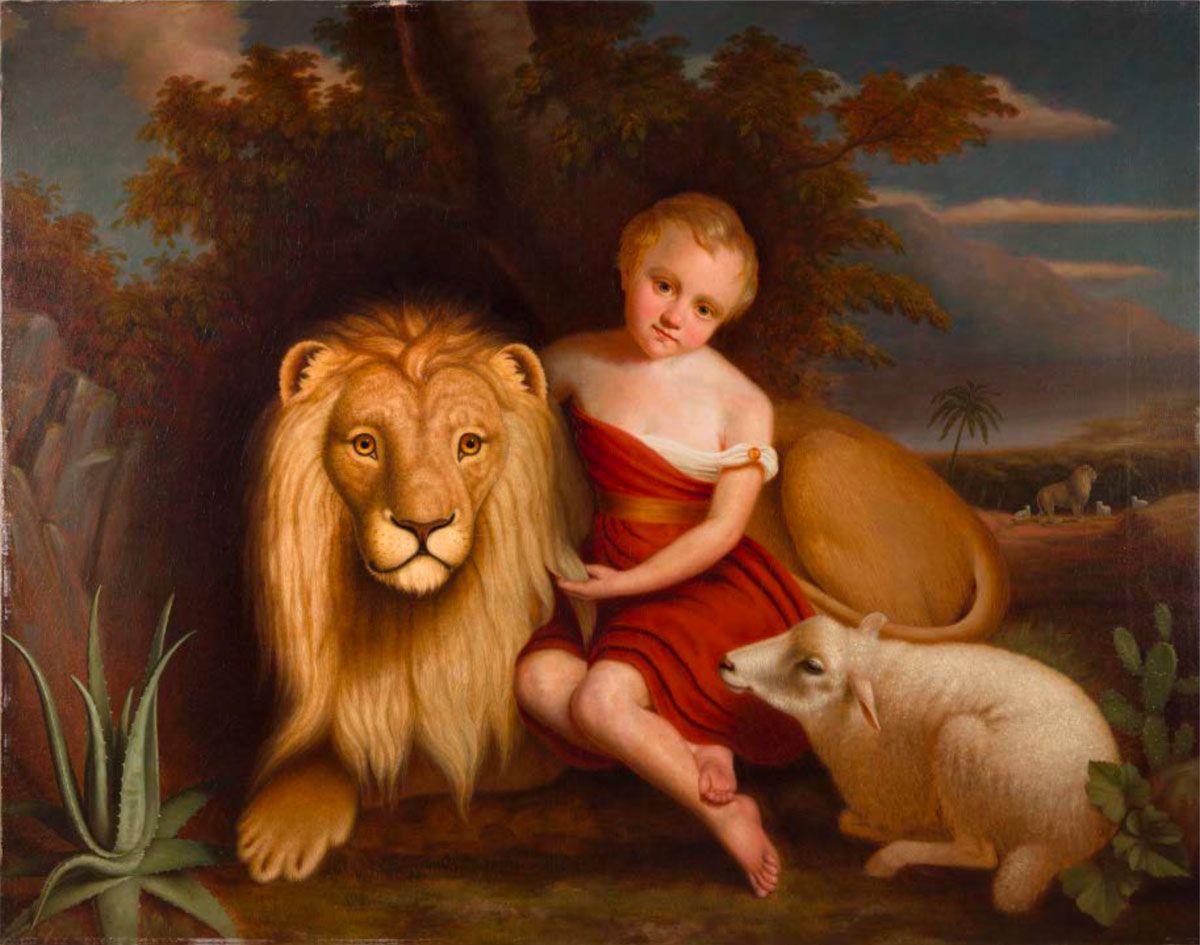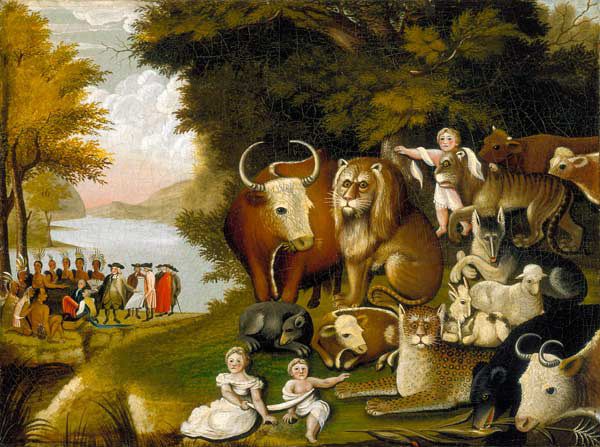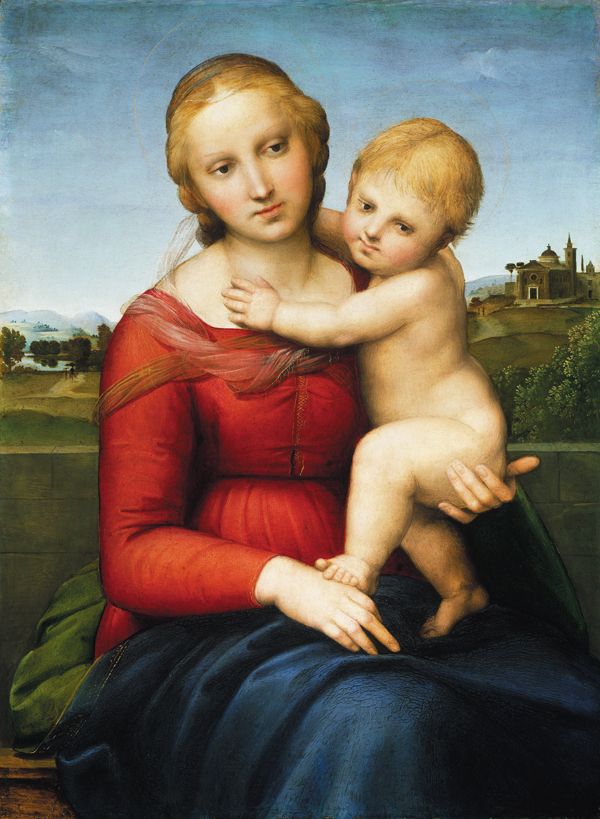
James Miller
Peaceable Kingdom, n.d.
Oil on canvas
McMullen Museum of Art, Boston College, Gift of Alexandria & Michael N. Altman P’22, ’24, ’26, 2019.1

John McCoy
Assistant Director, McMullen Museum

The opening third of the Jewish book of Isaiah is believed to have been written in the eighth century BCE. The author, looking beyond his own era of conflict between the Kingdom of Judah and its neighbors, speaks of an era of peace and justice to come when the city of Jerusalem will be under God’s protection and “The wolf will live with the lamb, the leopard will lie down with the goat, the calf and the lion and the yearling together; and a little child will lead them” (11:6). The child in this prophecy was later interpreted by many Christians to describe the incarnate Christ, and the passage became a favorite subject for American artists in the nineteenth century—most famously, Quaker Edward Hicks (1780–1839), who painted the scene, known as the “peaceable kingdom” at least sixty-two times (see image). The painting here is signed on the back by the obscure American artist James Miller. While his dates are unknown, stylistic elements suggest the work is from the mid-nineteenth century. It also seems that Miller spent some time studying European painting, even though his odd sense of scale and eclectic flora reveal a charming naivete.

The “little child” is an example of a nineteenth-century idealized portrait—not a likeness of a particular person, but an archetype based on conventional ideas of perfection. Raphael was a favorite model for painters of the era, and this child’s face resembles the Renaissance master’s depictions of putti and especially of the infant Christ (see image). The child’s fanciful garments are more theatrical than historic.
The wonderfully expressive animals are not at all in scale to the central child. The lion is nonetheless anatomically accurate, indicating the painter had a model from which to work. While today lions are native to Sub-Saharan Africa, in ancient times they spread throughout the Middle East and are prominent in Mesopotamian art. The delicate, pear-shaped lamb appears to be a Merino, a breed prized for the softness of its wool, originally from Spain. In the background, another lion socializes with several lambs; these are in correct scale to one another.
The many vegetative elements of the painting are remarkable. The painting’s broad, leafy trees are painted schematically after the style of seventeenth- and eighteenth-century European landscape painting—more specifically, after influential Dutch artists such as Jacob van Ruisdael (1628–82) (see image). The painterly leaves are unidentifiable, in contrast to the highly detailed and specific plants in the foreground. In the left foreground is the familiar succulent Aloe vera, native to the Arabian Peninsula; in ancient Rome it was a symbol of the divine. By the nineteenth century aloe was cultivated worldwide for its gel’s healing qualities. To the left is a cactus commonly called the prickly pear, symbolic of protection, hope, and endurance. It is native to arid regions of the Americas and here contributes to the work’s eclectic mixture of biomes. Lastly, in front of the lamb is a low grape vine. Grapes and vineyards are symbols throughout the book of Isaiah, for example in its Song of the Vineyard (5:1–7), an allegory about God’s relationship with Judah. For Christians, wine is also one of the two elements of the Eucharist.


